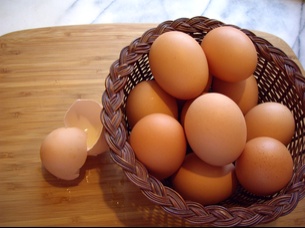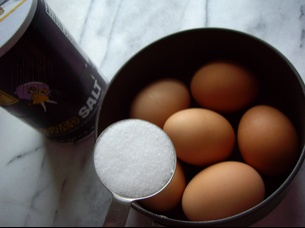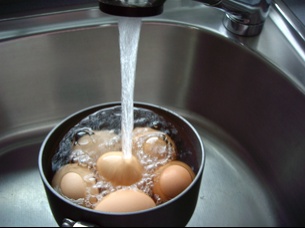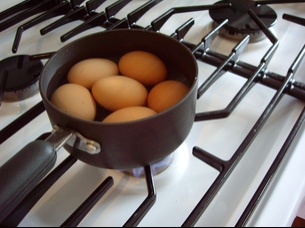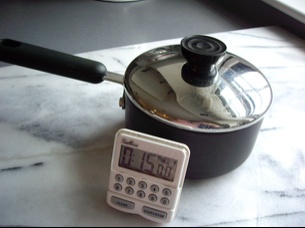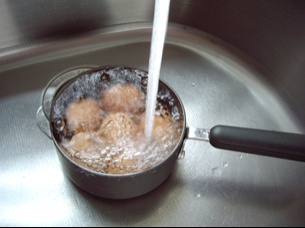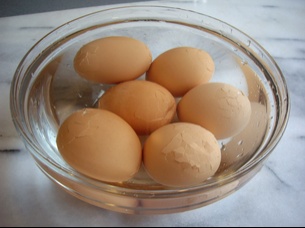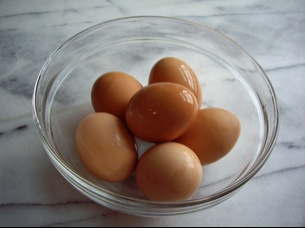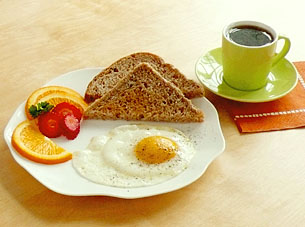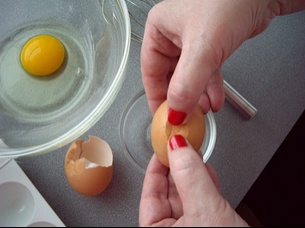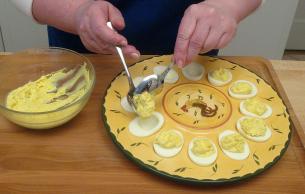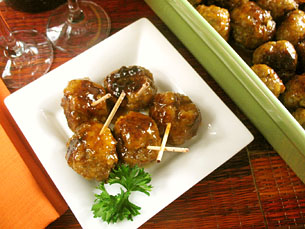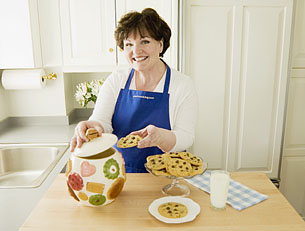If all you’ve got in your refrigerator is eggs, milk and butter, you’ve got yourself a meal.
There isn’t a single time of day that scrambled eggs don’t taste good! Who knows, this simple meal may become one of YOUR signature dishes.
Here is a list of the equipment you will need to make scrambled eggs:
- A small cup to first crack the eggs into to check for shells
- A small bowl to put the eggs in for mixing
- A fork or whisk for mixing
- A small sauce pan or fry pan, preferably non stick
- A silicone spatula
- Measuring spoons
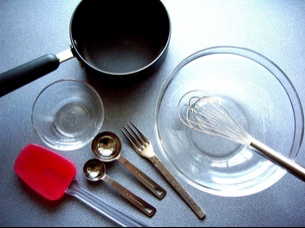
For 2 servings, or 1 ½ eggs per person the Ingredients are;
- 3 eggs
- 2 Tablespoons of milk
- 2 teaspoons of butter
- Salt and pepper to your taste
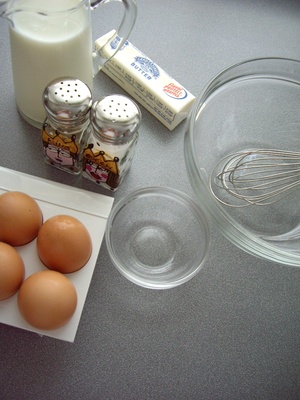
When you buy eggs in the grocery store, check that there are no broken eggs in the carton.
In the United States, by USDA requirement, eggs come already washed so you can use them straight away.
Begin by cracking each egg individually into the small cup. Check the egg to see that it looks okay and that there are no shells. Then add the egg to the mixing bowl.
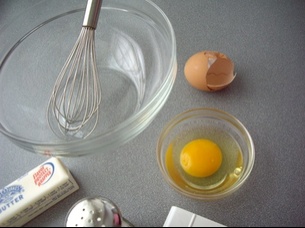
Now add a sprinkle of salt and black pepper (to your taste), and 2 Tablespoons of milk to the eggs. (There is some debate – see comments below – about when to add the salt – before or after cooking.)
Beat this mixture with a fork, or a whisk, in a vigorous elliptical motion until the yolks and the whites are all a nice bright yellow and completely blended together.

(Graydon, in the comments below, likes to skip all these steps and just mix everything up in the pan you are cooking in!)
Put the beaten eggs to one side, and melt 2 teaspoons of butter over medium low heat in a non-stick pan. If you turn the burner up too high the eggs will cook faster, but you will end up with very watery, soggy tasting eggs. So be sure to keep the temperature at medium-low.
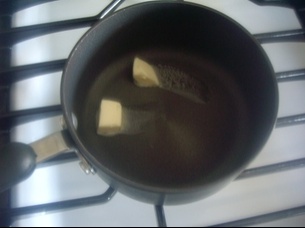
(Non-stick pans make cleaning up so much easier! However, Non-stick pans can easily be scratched with metal utensils. You’ll need to buy a silicon spatula or scraper. Caution: if you have an old fashioned rubber spatula and not silicone, it will eventually melt when you cook with it.)
When the butter has melted, add the eggs to the pan. As the eggs begin to cook, GENTLY move them around with the spatula so that they cook evenly.
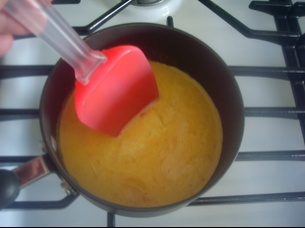
GENTLY and slowly stir the eggs.
Continue cooking the eggs until they are thickened but still soft.
Some people like really soft scrambled eggs, other people like really dry scrambled eggs. Just keep gently stirring the eggs until they look like what you think the perfect consistency is.
Transfer the eggs to the plate and serve them immediately. (As Jon pointed out in the comments, the eggs continue to cook even when removed from the pan and will get rubbery if left in the pan.)
If you wish, you can add some extra ingredients while the eggs are cooking. For example, try tossing in some chopped ham, sprinkling in slowly as you stir the eggs. Or you might try adding some shredded cheese, or chopped green onion or chives. My favorite addition is chopped parsley.
To find out even more about eggs, be sure to check out my post “How to: Eggs“.
***
Five Second Rule lives!
YIKES! When I was taking the photographs for this blog post I dropped my camera into the egg mixture! I scooped it out and wiped it off. The automatic lens sticks a little but my camera still works! Who knew?
(Although some of the photos do look a bit hazy!)

Enjoy!
If you are new to startcooking, or are a regular visitor here, please consider subscribing for free.


